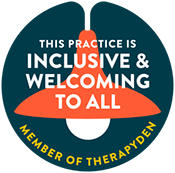Finding Relief from Chronic Stress: A Therapeutic Approach for Professionals
In today’s fast-paced and hyper-connected world, stress has become a near-constant presence in the lives of working adults. The steady influx of emails after hours, the relentless nature of deadlines, and the increasing demands of remote or hybrid work can leave even the most capable professionals feeling depleted. Over time, chronic stress can erode not only productivity but also physical health, relationships, and emotional well-being.
If you are beginning to feel the weight of persistent pressure, it may be time to consider professional support. You do not need to wait until burnout takes hold—support is available now to help you reclaim your sense of clarity, purpose, and calm.
A Holistic Approach to Managing Stress
Stress often becomes so woven into the daily routine that it begins to feel normal. However, when it interferes with your ability to sleep, feel joy, connect with others, or stay emotionally grounded, it may be time to explore new ways of responding.
Through a combination of Cognitive Behavioral Therapy (CBT), narrative therapy, mindfulness, and positive psychology, I help working professionals recognize and transform the internal and external patterns that perpetuate stress cycles. Together, we explore the story you hold about who you must be in your professional and personal life, and examine how these stories may either support or hinder your well-being.
Some of the strategies I may introduce include:
-
Establishing clear work-life boundaries and learning how to unplug with intention
-
Using mindfulness practices and breathwork to anchor attention in the present moment
-
Engaging in physical movement to reset the nervous system and increase vitality
-
Building in short, restorative breaks throughout the workday
-
Identifying and reframing unhelpful thought patterns that drive perfectionism or overcommitment
-
Developing self-compassion and resilience as active practices, not passive traits
These are not quick fixes, but sustainable, life-affirming changes. Even small, consistent shifts can help you move toward a more balanced and empowered way of living.
Therapy That Meets You Where You Are
Whether you are navigating high-stakes leadership roles, adjusting to remote or hybrid work, managing interpersonal stress at work, or simply feeling overwhelmed by the pace of your day-to-day responsibilities, therapy provides a grounded space to pause, reflect, and realign.
In our work together, I create a warm, nonjudgmental space where you can safely unpack the stressors you carry and begin to understand their more profound impact. Using evidence-based tools and a strengths-based approach, I support you in rewriting internal narratives that may be limiting your ability to feel peace, connection, or confidence.
If you are ready to invest in your well-being, I encourage you to schedule a session. Therapy does not have to be a last resort—it can be a proactive act of care and clarity. I am here to help you find relief, develop lasting coping skills, and reconnect with the values that matter most to you.




